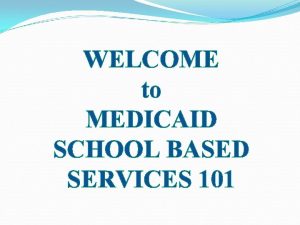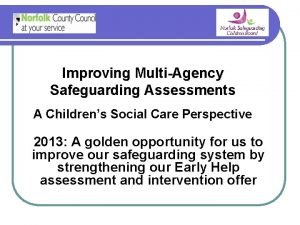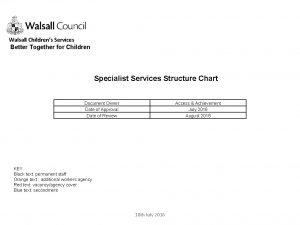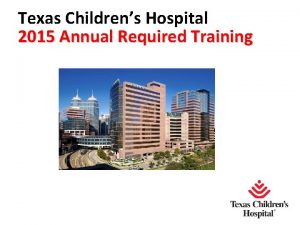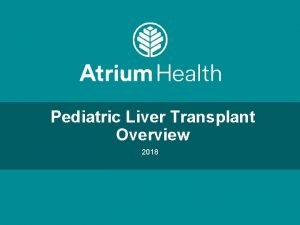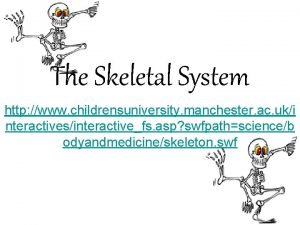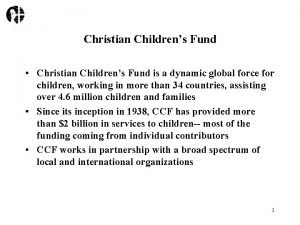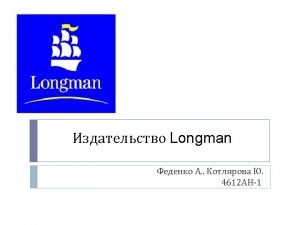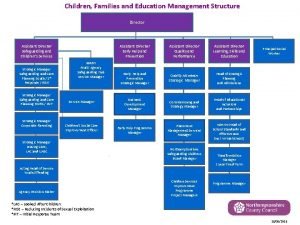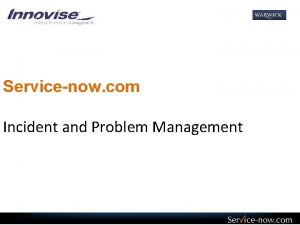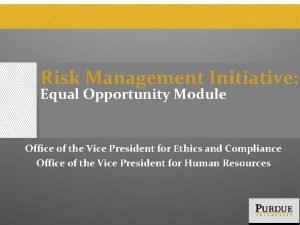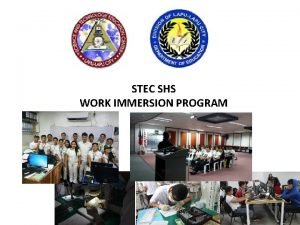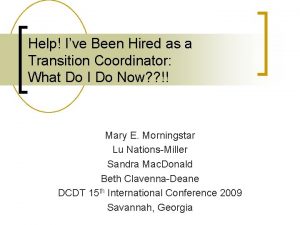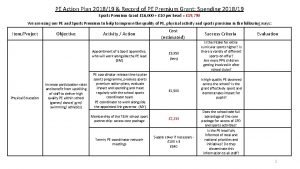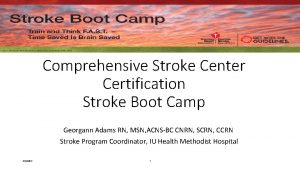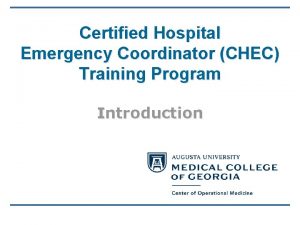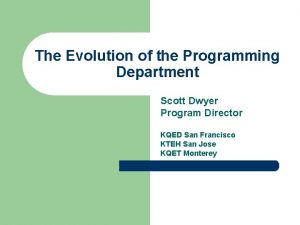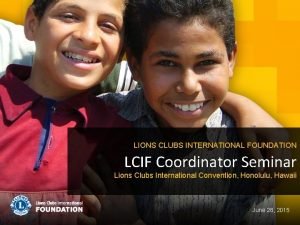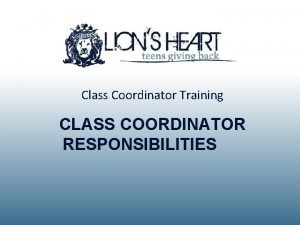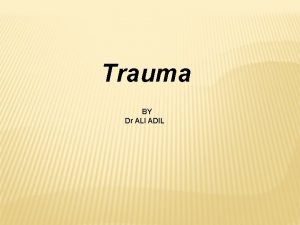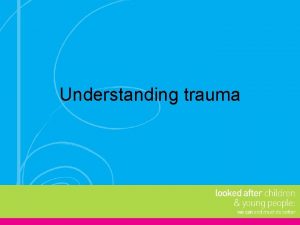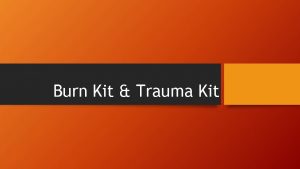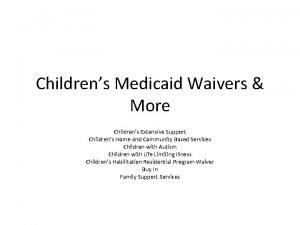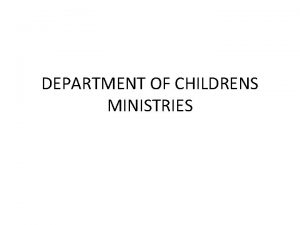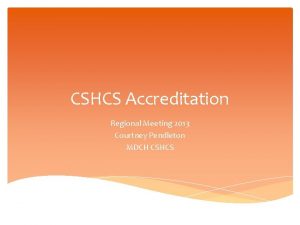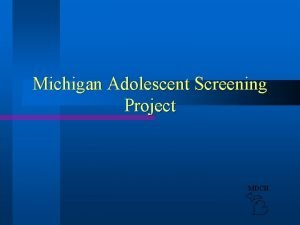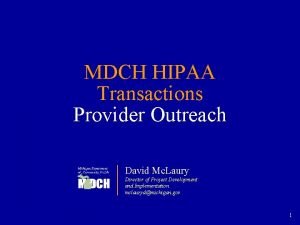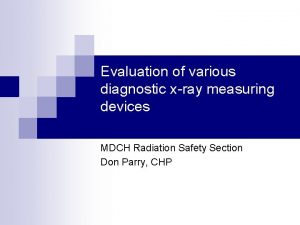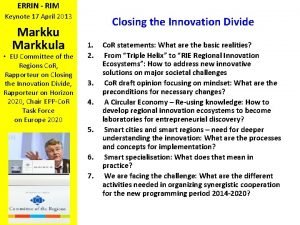MDCH Childrens Trauma Initiative Errin SkinnerLiell Initiative Coordinator
























- Slides: 24

MDCH Children’s Trauma Initiative Errin Skinner-Liell, Initiative Coordinator May 4, 2015

Contents: I. Overview of trauma II. Components of the Initiative III. Child outcome data IV. Summary

What is Trauma is an event or experience that: § Threatens the life or physical integrity of a person or of someone critically important to that person (such as a spouse, child, parent, sibling) § Produces intense physical and emotional reactions, including: • An overwhelming sense of terror, helplessness, and horror • Physical sensations such as rapid heart rate, trembling, dizziness, or loss of bladder or bowel control 3

Defining Child Trauma A sudden, unexpected, nonnormative event that overwhelms the child’s capacity to cope.

Types of Trauma Acute trauma is a single, time-limited event, such as: § A serious accident § An act of community violence or crime § A natural disaster (earthquakes, wildfires, floods) § The sudden or violent loss of a loved one § A physical or sexual assault (e. g. , being shot or raped) 5

Types of Trauma, Continued Chronic trauma is the experience of multiple traumatic events: § May be recurrent trauma of the same kind—such as physical or sexual abuse—or varied traumas such as witnessing domestic violence and then becoming a victim of community violence § The effects of chronic trauma tend to build on each other, as each event serves as a reminder of past trauma and reinforces its negative impact 6

What we see

What is underneath 8

“ 80% of the children we serve at CMH have multiple traumatic experiences” CMHSP administrator 9

Essential Elements of the Children’s Trauma Initiative • Trauma Informed Screening • Trauma Assessment and Treatment • Caregiver Education Supported by all levels of the CMH System ◦ Administration ◦ Supervisors ◦ Direct Service Staff ◦ Support Staff ◦ Caregivers Trauma Informed Screening Trauma Assessment and Treatment Caregiver Education 10

Values of the Initiative Integration and support of trauma informed practice across system Family driven, youth guided practice Quality practice and use of Evidence Based Practice 11

Trauma Informed Screening Goal is to ensure early identification of trauma �Screening interventionists (in person and via telephone) �Intake Workers 12

Trauma Focused Cognitive Behavioral Therapy (TF-CBT) Goal is to reduce trauma symptomolgy through trauma treatment using TFCBT �Clinicians and their supervisors are trained in the evidence based TF-CBT model and implement the model with children and their families. �Home-based / Outpatient clinicians and their supervisors 13

Treatment Model – TF-CBT Components P = Psychoeducation & Parenting skills R = Relaxation A = Affect regulation C = Cognitive coping T = Trauma Narrative I = In-vivo exposure C = Conjoint session E = Enhancing safety & social skills 14

Caregiver Education through Resource Parent curriculum Goal is for CMHSP’s to provide trauma education to caregivers in their local community who are raising traumatized youth Training of trainers model enables sustainability ◦ Goal is for participating sites to incorporate this into their system of services available for children, their families, and their community ◦ CMH’s share this resource with caregivers in their system and community Desired outcome is to equip caregivers and the community to effectively intervene and support the healing of children with a history of trauma 15

Resource Parent Training Modules • • Introductions Trauma 101 Understanding Trauma’s Effects Making a Safe Place Dealing with Feelings and Behaviors The Importance of Connection Becoming an Advocate Taking Care of Yourself 16

Numbers served through Initiative Total of 12 cohorts completed; 2 cohorts currently being trained Approximately 20 screening interventionists trained, 406 clinicians and 130 supervisors trained to implement TFCBT, and 340 parents and staff facilitators trained to conduct local Resource Parent trainings 40 CMHSP’s trained covering 73 counties

Child Outcome Data `

Evaluation Summary `

Outcomes: Screening Implementation of validated trauma screening instrument during intake assessment process Integration of the trauma principle “if you don’t ask, they won’t tell” at the first point of contact

Outcomes: TFCBT Continued statistically significant and clinically relevant outcomes across all measures: UCLA trauma symptoms based on DSM criteria, CAFAS child measure, and CAFAS parent measure. Data for young children shows positive results with home, mood, and behavior toward others on the PECFAS, supported by results on the TSCYC.

Outcomes: Caregiver Education Parents, professionals, and community providers trained as facilitators of psychoeducational trauma curriculum Positive feedback from caregivers on the impact of participating in the parent groups

Lessons Learned Support and commitment at all levels to build a trauma informed system Development of an action plan to address secondary traumatic stress Integration of essential elements (screening, assessment/ treatment, and caregiver education) Individual and/or group supervision to support implementation of model and new tools

Contact Information Mary Ludtke, MDCH Consultant Email: Ludtke. M@michigan. gov Telephone Number: (517) 241 -5769 Errin Skinner Liell, Initiative Coordinator Email: skinnere@ceicmh. org Telephone Number: (517) 346 -8004 Kathy Fitzpatrick, Technical Assistance Specialist Email: fitzpatr@ceicmh. org Telephone Number: (517) 346 -8070 24
 Pcg claiming system illinois
Pcg claiming system illinois Colorado children's book award
Colorado children's book award Kirklees safeguarding childrens board
Kirklees safeguarding childrens board Black childrens memorial
Black childrens memorial Walsall childrens services
Walsall childrens services World literature quiz 22
World literature quiz 22 Texas children's hospital moli
Texas children's hospital moli Toddler fever 102
Toddler fever 102 Levine childrens
Levine childrens Manchester childrens university
Manchester childrens university Childrens christian fund
Childrens christian fund History of childrens literature
History of childrens literature National sovereignty and childrens day
National sovereignty and childrens day Longman children's picture dictionary
Longman children's picture dictionary Childrens services
Childrens services Servicenow problem coordinator role
Servicenow problem coordinator role West lafayette campus title ix coordinator
West lafayette campus title ix coordinator Shs work immersion
Shs work immersion Total army sponsorship training course
Total army sponsorship training course Active student
Active student Action plan for sports coordinator
Action plan for sports coordinator Stroke coordinator boot camp
Stroke coordinator boot camp Chec certification
Chec certification Traffic coordinator comcast
Traffic coordinator comcast Lcif grant reviews
Lcif grant reviews
